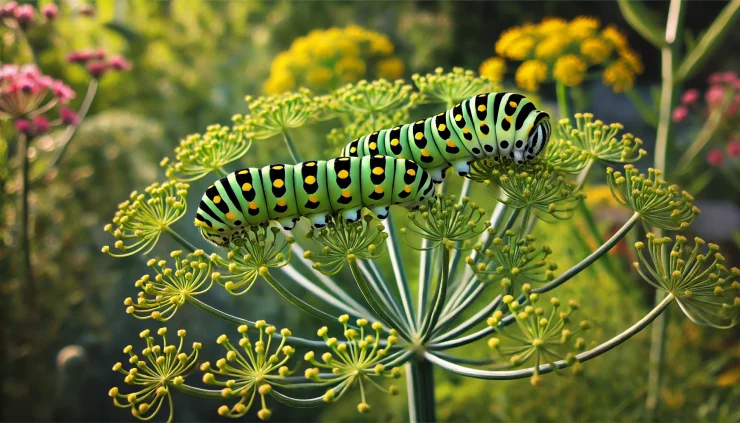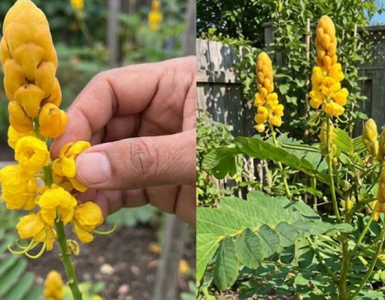As a gardener, encountering various insects on your plants is common. However, not all of them are harmful pests. Some, like the caterpillars of the Black Swallowtail butterfly, are beneficial and should be protected. If you spot these caterpillars on your fennel, dill, or parsley plants, here’s why you should let them be.
Identifying Black Swallowtail Caterpillars
Black Swallowtail caterpillars are easy to recognize. Here are some distinguishing features:
Appearance: These caterpillars are green with black bands and yellow or white spots. They start off as small, dark caterpillars with a white “saddle” and transform into more colorful larvae as they grow.
Plants They Prefer: They are commonly found on plants in the carrot family, including fennel, dill, and parsley.
Why Protect Black Swallowtail Caterpillars?
- Contribution to Biodiversity
Black Swallowtail butterflies play a crucial role in pollination. By allowing their caterpillars to thrive, you support the butterfly population and contribute to the overall biodiversity of your garden ecosystem. - Natural Beauty
The Black Swallowtail butterfly is one of the most striking butterflies in North America, with its beautiful black wings adorned with blue and yellow spots. Allowing the caterpillars to mature ensures your garden will be graced by these stunning butterflies. - Educational Opportunities
Observing the life cycle of the Black Swallowtail can be a fascinating and educational experience, especially for children. It provides a hands-on opportunity to learn about metamorphosis and the importance of butterflies in the ecosystem.
How to Support Black Swallowtail Caterpillars
- Provide Host Plants
Grow plenty of fennel, dill, and parsley in your garden. These plants are the primary food sources for Black Swallowtail caterpillars. By ensuring a steady supply, you’ll support their development from larva to butterfly. - Avoid Pesticides
Pesticides can be harmful to caterpillars and butterflies. Opt for natural pest control methods to maintain a healthy garden environment. Companion planting and manual removal of pests are effective alternatives.
3.Create a Butterfly-Friendly Habitat
In addition to host plants, consider planting nectar-rich flowers to attract adult butterflies. Plants like milkweed, coneflowers, and zinnias are excellent choices. Provide shallow water sources and avoid mowing areas where butterflies may be active.
What to Do if You Find Caterpillars The best action is to leave the caterpillars undisturbed on their host lants. They will feed and grow, eventually forming a chrysalis and emerging as butterflies.
If the caterpillars are on plants you plan to harvest, gently relocate them to other host plants in your garden.
Spotting Black Swallowtail caterpillars on your fennel, dill, or parsley plants is a positive sign of a healthy garden. These caterpillars will transform into beautiful butterflies that contribute to pollination and biodiversity. By protecting and supporting these caterpillars, you can enjoy the beauty and benefits of Black Swallowtail butterflies in your garden.






Add comment